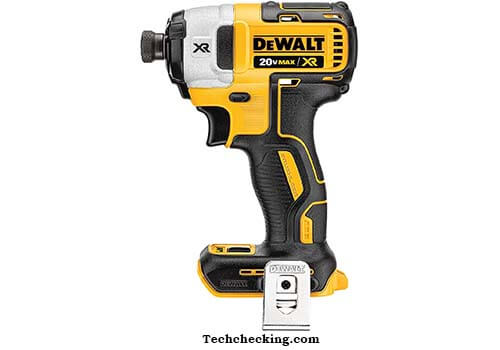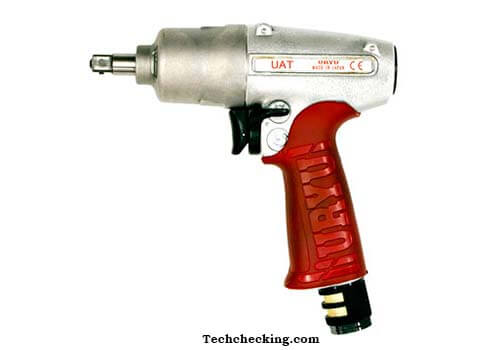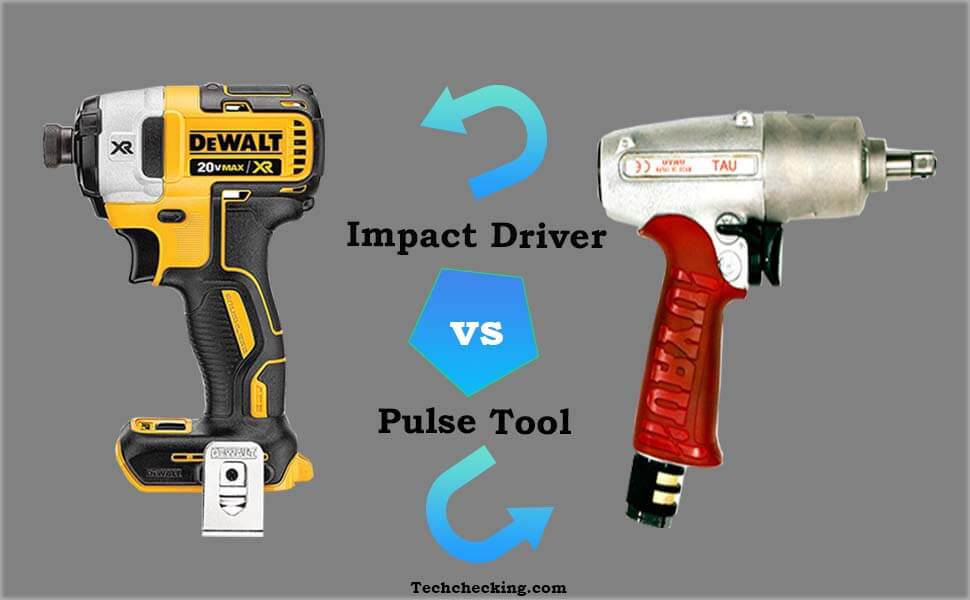Last Updated on January 11, 2023 by TechChecking
With the same cost for supplies and access to the same demand, companies tend to compete in themselves based on who is more eligible and can produce more, faster, and at a lower or reasonable cost. The nature, technique, and strategy help you achieve the targeted production. However, choosing the right tools would be the wise choice to attain the goal. In this case, you should know the differences between drivers such as pulse tools vs impact drivers. You also need to know the best pick between the impact drivers vs pulse tools.
Proper tools for specific jobs are undoubtedly essential. Power tools play a very important role to finish the job as well. Besides power tools, hand tools such as different types of wrenches for many jobs are done impeccably.
However, if you work on a heavy-duty job, you need some big and powerful tools with rotation blades. This kind of tool can help you do any kind of big project. In addition, if you need impact drivers, you have to decide carefully too.
Sometimes, you may be unable to afford the best driver due to insufficient funds in your pocket and this is exactly why you should have a look at the best brushless impact drivers for your projects. Anyways, if you are not yet quite clear what is the difference between brushless and brush impact drivers, just google it.
You may like –
However, our topic to discuss today is the difference between impact drivers and pulse tools. Though they don’t have a significant difference they are still different in their behavior. Let’s dig deeper.
Contents
- Impact Drivers vs Pulse Tools
- What is An Impact Driver?
- What is A Pulse Tool?
- Core differences between pulse tools vs impact drivers
- Impact Drivers vs Pulse Tools: Which One Is the Best for Heavy Fastening?
- How Can You Control Torque with Pulse Tools?
- Pulse Tools vs. Impact Drivers: Worker Safety and Equipment Longevity
- Comparison Between Pulse Tools Vs Impact Drivers
- So, Which One Should I Pick?
- Final Words
Impact Drivers vs Pulse Tools
The impact drivers and the pulse tools are quite important for assembly or service operations. These two tools are usually used as alternatives for one another. Let’s discuss the tools separately and see their benefits.
What is An Impact Driver?

An impact driver is one kind of heavy-duty power tool that helps to penetrate any kind of wood, concrete, steel, or any material. Besides, this tool is used to drive screws and fasteners into the material. It has a high rotational torque that blows in the axial direction using an internal impact mechanism. Anyone can have a powerful tool like this for personal or professional use.
Torque is the reason to make powerful an impact driver which is measured in inches and pounds (in. lb). The ranges of torque are from 1500 to 1800 in. lb. this tool saves your time as well as energy.
Generally, an impact driver is a great power tool for home improvement projects or any DIY projects.
How Does An Impact Driver Work?
An impact driver consists of some important components. Motor, batteries, outer shell, spring, hammer, anvil, and so on. The spring, hammer, and anvil create rotational impact force. This is how torque is created which is the main part of an impact driver.
However, the motor turns the shaft, and then the spring compresses and releases forcefully. This helps to drive the hammer rotationally against the anvil. This action continues and happens so rapidly. You can control the mode of how fast you want to do the work. This is how an impact driver works.
Benefits of an impact driver –
- Powerful tool to complete the job
- A ¼” standard hex collet to keep drill bits in place
- Comfortable and easy to handle
- Fits into tight spaces
- Fairly affordable
- Lighter than regular drills
- Controlling modes available
- Saves time, money, and energy
- Ideal gift for any DIY lover
Drawbacks of an impact driver –
- Makes noise during use
- Accidents may happen for the powerful force
- Can’t use the same bits from your regular drill
- Some impact drivers are very expensive
Any professional would choose a quality brushless impact driver to drive large fasteners that can handle quite a load. The high-end drivers would make you fully satisfied with its service.
Some Impact Drivers You May Choose –
- DEWALT 20V MAX XR Brushless Impact Driver
- Makita 18V Brushless Cordless Impact Driver Kit
- Metabo HPT 18V Cordless Impact Driver
- BOSCH GXL12V-220B22 12V Max 2-Tool Brushless Combo Kit
- Milwaukee 18-Volt Lithium-Ion Brushless Cordless Hex Impact Driver
What is A Pulse Tool?

A pulse tool is a kind of impact wrench that combines high torque and speed. The thoughtful engineering and unique design of a pulse tool represent motor power and hydraulics that lead to an assembly tool. However, it produces smooth, controlled torque in a series of very fast (2-4 ms) events and virtually no torque reaction.
How Does A Pulse Tool Work?
Pulse tools are discontinuous-drive tools. These pulse nutrunners apply torque in small increments rather than one continuous blow. However, when the nut is running free, the tool stop pulsing and the driveshaft spins rapidly. The usual pulsing RPM speed range is from 4,000 to 8,000 RPM while some small pistol-grip models top out at 10,500 rpm.
Once the fastener starts contacting the workpiece, the tool begins pulsing. A short burst of torque just lasts for a few milliseconds. A pulse tool is so fast that only 10 to 15 pulses are usually sufficient to tighten a fastener. To know more, you can check here.
Please Note: Pulse tools are not recommended for soft joints such as rubber washers.
Pulse tool working mechanism: a pulse tool has a unique hydraulic mechanism that has two rotating parts. The first one is the Casing which is, an egg-shaped inner chamber, filled with hydraulic fluid. It’s directly connected to the air motor. The second part is called the anvil which fits inside the casing. In this case, the anvil is connected to the tool’s driveshaft and is bisected by two blades that are pushed outward by springs. However, these two blades separate the chamber into two halves. And the anvil’s blades make contact with the inner wall of the chamber, and this is how generates pressure.
Benefits of a Pulse Tool –
- A very powerful and useful tool
- Ergonomic design
- Comfortable and handy
- Lightweight and durable
- Produces high torque and pressure
- Unique hydraulic mechanism
- Good grip handle
- Simple structure and protector
- Durable oil seal
- Saves time and money
- Nice tool to gift for any tools lover
Drawbacks of an impact driver –
- Accidents may happen for the powerful force
- Some pulse tools are very expensive
Some Pulse Tools You May Choose –
- Ingersoll Rand 123MAXK Short Barrel Air Hammer Kit
- Dremel 4000-4/34 Variable Speed Rotary Tool Kit
- Ingersoll Rand 114GQC Air Hammer
- WEN 2305 Rotary Tool Kit with Flex Shaft
Core differences between pulse tools vs impact drivers
The two tools work in the same category work then what is the difference between the two tools? Well, the main difference is its constructional and building design and method.
| Features | Impact Drivers | Pulse Tools |
| Durable oil seal | No | Yes |
| Torque | High | Maximum torque |
| Unique hydraulic mechanism | No | Yes |
| Direct air shut-off | No | Yes |
| Changeable driving end | Yes | Yes |
| Relief valve | Yes | Yes |
| High Precision | No | Yes |
| Torque application | Continuous blow | In small increment |
| Effectiveness | Works on any materials | Not recommended for soft joints like a rubber washer |
| Vibration | High | Low |
| Torque reaction | High | Low |
| Automatic torque control mechanism | No | Yes |
So, the main difference starts with the building design and mechanism. Pulse tools are high precision while an impact driver isn’t. Besides, a pulse tool uses a hydraulic mechanism but an impact driver doesn’t. And above all, pulse nutrunners are discontinuous-drive tools while impact drivers are on continuous blow.
Impact Drivers vs Pulse Tools: Which One Is the Best for Heavy Fastening?
Producing heavy equipment such as farm implements, power plant machinery, oil and gas assets needs heavy-duty tools. In addition, aerial, naval, and terrestrial vehicles—fasteners endure a great amount of stress. However, the big fasteners that can usually handle these kinds of loads need torque values. It should be between 5-10 foot-pound on the low end and up to 300 foot-pounds and more on the high end.
While some hand tools such as adjustable wrenches can provide some amount of torque and it is obvious that they are quite slower than air tools like pulse tools and impact drivers.
In order to pick the best tools for heavy fastening, both impact wrenches and pulse wrenches deliver torque using a discontinuous compressed air drive. The core difference between impact drivers vs pulse tools is the inclusion of an internal hydraulic clutch which an impact driver doesn’t have. They are distinguished in terms of control as well.
We think pulse tools would be better to handle heavy fastening than impact drivers.
How Can You Control Torque with Pulse Tools?
Pulse wrenches use their clutch to slip when the preset amount of torque is reached. However, it is essential to use the appropriate amount of torque for each fastener. Delivering more torque than it needs may damage the plates your bolt is holding together. Shearing, deforming, or warping the fastener can be due to over-providing torque which increases tension load. Conversely, applying too little force to a clasp can be similarly as perilous, as it can come loose under pressure/ stress.
Products assembled with improper torque values may make you do the rework while the quality assurance phase begins. It is a waste of money and time. So, you need to be very careful while using impact drivers to fasten your vehicles or products.
Pulse Tools vs. Impact Drivers: Worker Safety and Equipment Longevity
These tools (pulse tools and impact wrenches) are strong and sturdy enough to provide worker safety and equipment longevity. Quality tools are always trustable. In addition, the pulse tool’s hydraulic fluid acts as a built-in shock absorber. Moreover, it dissipates the reaction force of the tool head’s impact on the fastener. This is how the operators can work for a longer time and faster without having any musculoskeletal injuries from the action of the tool. These also increase worker safety, happiness, and productivity.
However, impact drivers are supposed to inspect regularly so that whether it works properly or not. In addition, you can if you feel any sign of fatigue. Besides impact drivers, pulse tools also require maintenance, but this is typically limited to tool calibration and the replacement of hydraulic fluid.
Moreover, both impact drivers and pulse tools are effective in heavy-duty service. It is true that the hydraulic clutch in pulse tools makes a significant impact in terms of efficiency. By precisely controlling torque, reducing stress on operators, and minimizing stress on the tool itself, pulse tools have the capacity not to lose the product, enhance worker safety, and extend equipment lifespans.
Comparison Between Pulse Tools Vs Impact Drivers
One important similarity between those two tools is both of them run on air power. They both deliver torque in order to be faster and more powerful to handle all but the largest bolts. So, where is the difference? Well, it lies in control. They can be distinguished based on Control.
Pulse tools have an internal hydraulic clutch that always detects the amount of torque the tool delivers to each fastener. When the tool reaches a certain amount of torque that is preset, the clutch disengages and the tool stops. While impact drivers have mechanical instead of hydraulic clutches.
You know that each fastener has an ideal range of torque. If too little torque is applied, the fastener won’t hold. Too much and the fastener may suffer damage and sometimes can fail in stress.
Above all, if you want to know the comparison between pulse tools and impact drivers – well, the pulse tools are generally more productive and effective than impact drivers for most fastening applications.
So, Which One Should I Pick?
As we have already mentioned both of the tools work for the same purpose. So picking one is totally upon you. The sturdiness, power, handle, weight, and ergonomic design for both are really amazing. One thing an impact driver lacks is an internal hydraulic clutch. This provides torque, less vibration, and precise control. However, an impact driver makes annoying noise during work, vibrates awful, and sometimes cannot be controlled.
In this case, if you are a man with a flexible budget, you can have a pulse tool and certainly, it would be a wise decision.
Final Words
Which one will you pick between an impact driver and a pulse tool? We have already discussed the above about impact drivers vs pulse tools. If you have read the whole article, we hope you have learned something at least if you are a newbie in this field. Based on the price, weight, design, and durability, you can choose any one of them. We have suggested some of them but if you want to know more, you can visit more pages as well. You are welcome.

